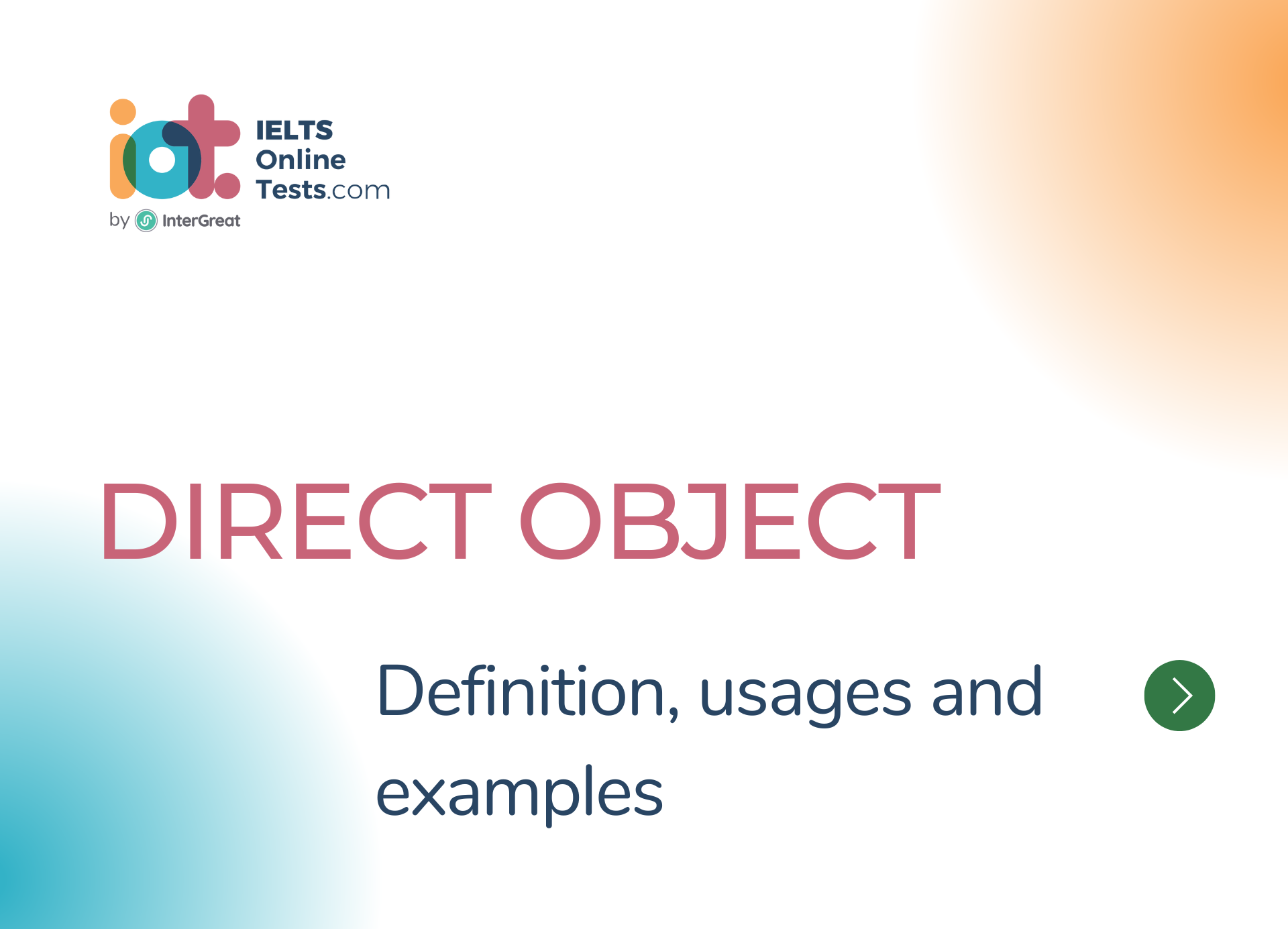
Direct object
The direct object is a noun, pronoun, or noun phrase that directly receives the action of the verb in a sentence. It completes the meaning of the verb and answers the question "Whom?" or "What?" after the verb.
Here are some important points about direct objects:
Definition: The direct object is the noun, pronoun, or noun phrase that receives the action of the verb directly.
- Example: "She ate an apple."
- In this sentence, the verb is "ate," and the direct object is "apple."
- Example: "She ate an apple."
Position: The direct object typically comes after the verb in the sentence.
- Example: "He kicked the ball."
- Here, "the ball" is the direct object placed after the verb "kicked."
- Example: "He kicked the ball."
Transitive Verbs: Direct objects are associated with transitive verbs, which require a direct object to complete their meaning.
- Example: "She reads a book."
- The verb "reads" is transitive, and "book" is the direct object.
- Example: "She reads a book."
Object Recognition: To identify the direct object, ask the question "Whom?" or "What?" after the verb. The answer will indicate the direct object.
- Example: "They watched a movie."
- Ask, "What did they watch?" The answer is "a movie."
- Example: "They watched a movie."
Object Modifiers: Direct objects can be modified by adjectives or other descriptive words to provide more information about them.
- Example: "She bought a beautiful dress."
- The direct object "dress" is modified by the adjective "beautiful."
- Example: "She bought a beautiful dress."
Multiple Direct Objects: Some sentences can have more than one direct object when the verb has multiple receivers of the action.
- Example: "He gave Mary a gift."
- Both "Mary" and "gift" are direct objects.
- Example: "He gave Mary a gift."
Understanding direct objects is crucial for constructing grammatically correct sentences and ensuring clarity in communication. By identifying the direct object in a sentence, you can provide additional details about the action and specify the receiver of the action.




